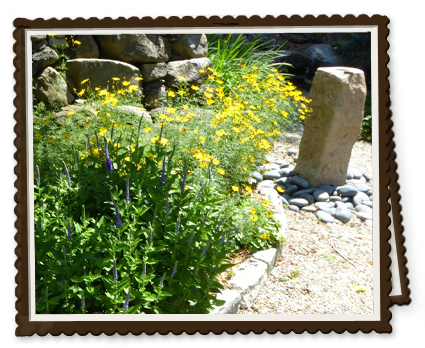
Seeds of Change
Flower Gardening
Flower Garden Planning
Annual flowers can be either planted as seeds or purchased as plants, depending upon how much patience you have. If seeds, some are best started inside. Perennial flowers, that come up every year, are usually purchased as plants.
When planning flower gardens, one needs to ask oneself a number of questions before beginning. First one should ask oneself, “How much time do I want to spend on this every year?” And then, “Is continuous summer bloom important, or can I settle for Spring and Fall bloom?” The reason for this is that Perennial Flower gardens come up year after year, and with appropriate mulching and periodic division/replacement of plants, they require little care other than periodic water depending upon how much rain we get. However, most perennials bloom either in the spring or the fall, with a few blooming in the summer. They can have a variety of lovely foliage, however in the in-between times.
Roses are a major exception, but require a great deal of care, and really need a garden of their own. Lilies, which grow from bulbs, also like their own bed, as you never know where they are until they come up. Lily beds can be augmented by a nice boarder of short, spring flowering bulbs like crocuses, hyacinths, and dwarf daffodils. When these have finished blooming, their foliage will blend in with the lilies and not look as messy as when planted in a regular perennial bed or an annual bed. (If you cut the leaves off, the bulbs will not get the nourishment they need for next year’s flowers.)
People plant Annual flower gardens because they produce a riot of color all summer, and often provide a source for cut flowers. However, the plants have to be replaced every year. Pansies are early bloomers and like the cool weather, but generally most annuals are very tender and have to be planted after the last frost date, which in Redding is April 30th. Annuals can be grown from seeds, but these should not be planted until the soil is warm or they will rot.
When deciding upon varieties of either annuals or perennials, take into account both mature height and color. Plant short varieties in the front of the bed, and taller ones in the back. In a perennial garden try and select varieties that provide you with some color throughout the growing season. So, for instance, plant both Creeping Phlox or Candy Tuft (April - June) Peonies or Iris (May-June), Lavender (July-August) and Asters or Chrysanthemums (September). Now go look at those catalogues!
